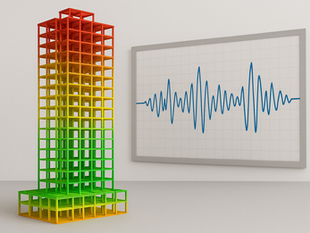
Evolution of Skyscraper Design: Past, Present & Future
2
10
0
Skyscrapers have long symbolized architectural ambition and technological progress. From the early steel-framed buildings of the late 19th century to today's futuristic supertalls, these towering structures have continually evolved to push the limits of design, engineering and sustainability. This article explores the transformation of skyscraper architecture, highlighting key innovations that have shaped the built environment over time.

The Birth of Skyscrapers: The Late 19th & Early 20th Century
The Industrial Revolution provided the materials and techniques necessary for vertical expansion in cities. Before steel-frame construction, buildings relied on masonry load-bearing walls, limiting their height. The breakthrough came with two key innovations:
Steel Framing: Allowed for taller structures without massive walls, reducing weight and increasing flexibility.
Elevators: Enabled practical movement between floors, making tall buildings functional for everyday use.
Iconic Early Skyscrapers
Home Insurance Building (Chicago, 1885) – Often considered the first true skyscraper, standing at 10 stories.
Flatiron Building (New York, 1902) – A steel-framed icon with a unique triangular design.
Chrysler Building (New York, 1930) – The first building to surpass 1,000 feet (305 m), showcasing Art Deco elegance.
The Mid-20th Century: The Rise of Glass & Steel Towers
By the 1950s and 1960s, skyscraper design embraced minimalist aesthetics with glass curtain walls and sleek steel structures. Architects like Mies van der Rohe championed the “less is more” philosophy, emphasizing simplicity and functionality.
Key Developments
Curtain Wall Systems: Allowed for lighter facades and greater transparency.
Advancements in Structural Engineering: Enabled taller and more stable high-rises.
Modernist Design Language: Emphasized clean lines and functional spaces.
Notable Skyscrapers of the Era
Seagram Building (New York, 1958) – A masterpiece of modernist architecture.
John Hancock Center (Chicago, 1969) – Integrated structural expressionism.
Willis Tower (formerly Sears Tower, Chicago, 1973) – The tallest building in the world until 1998.
The Late 20th & Early 21st Century: The Age of Megatall Structures
The late 20th century saw the emergence of supertall (300m+) and megatall (600m+) skyscrapers, fueled by advances in engineering, materials, and construction methods.
Key Innovations
High-Strength Concrete: Allowed for thinner, taller structures.
Aerodynamic Designs: Reduced wind loads and structural stress.
Sustainability Measures: Integrated green building systems and energy efficiency.
Iconic Skyscrapers of This Era
Petronas Towers (Malaysia, 1998) – Marked a shift toward cultural symbolism in skyscraper design.
Taipei 101 (Taiwan, 2004) – First skyscraper to exceed 500 meters, incorporating seismic resistance.
Burj Khalifa (Dubai, 2010) – The current tallest building in the world (828m), showcasing structural innovation and luxury.
The Future of Skyscrapers: Innovation & Sustainability
As urban populations grow, the next generation of skyscrapers must address environmental concerns, energy efficiency, and resilience. Architects and engineers are exploring new frontiers in high-rise design.
Emerging Trends
Timber Skyscrapers: Mass timber construction is gaining traction for its low carbon footprint.
Smart Buildings: Integration of AI, IoT, and responsive systems to optimize energy use.
Vertical Cities: Skyscrapers designed with mixed-use functionality, creating self-sufficient urban hubs.
Floating & Underground Towers: Concepts that expand vertical living beyond traditional limits.
Visionary Projects
The Line (Saudi Arabia) – A linear smart city featuring next-generation sustainable architecture.
Jeddah Tower (Saudi Arabia, under construction) – Set to surpass Burj Khalifa, emphasizing advanced engineering.
Tokyo’s Sky Mile Tower (Concept) – A 1,700-meter mega-structure designed for hyper-dense urban living.
Conclusion
Skyscraper design has evolved from steel-framed giants to smart, sustainable vertical cities. As technology advances and climate-conscious architecture takes center stage, the future of skyscrapers promises to be greener, more innovative, and even taller. Whether through timber towers, floating cities, or AI-driven smart buildings, the next generation of skyscrapers will redefine the urban landscape for years to come.
🌍 What do you think the future holds for skyscrapers? Share your thoughts in the comments!






